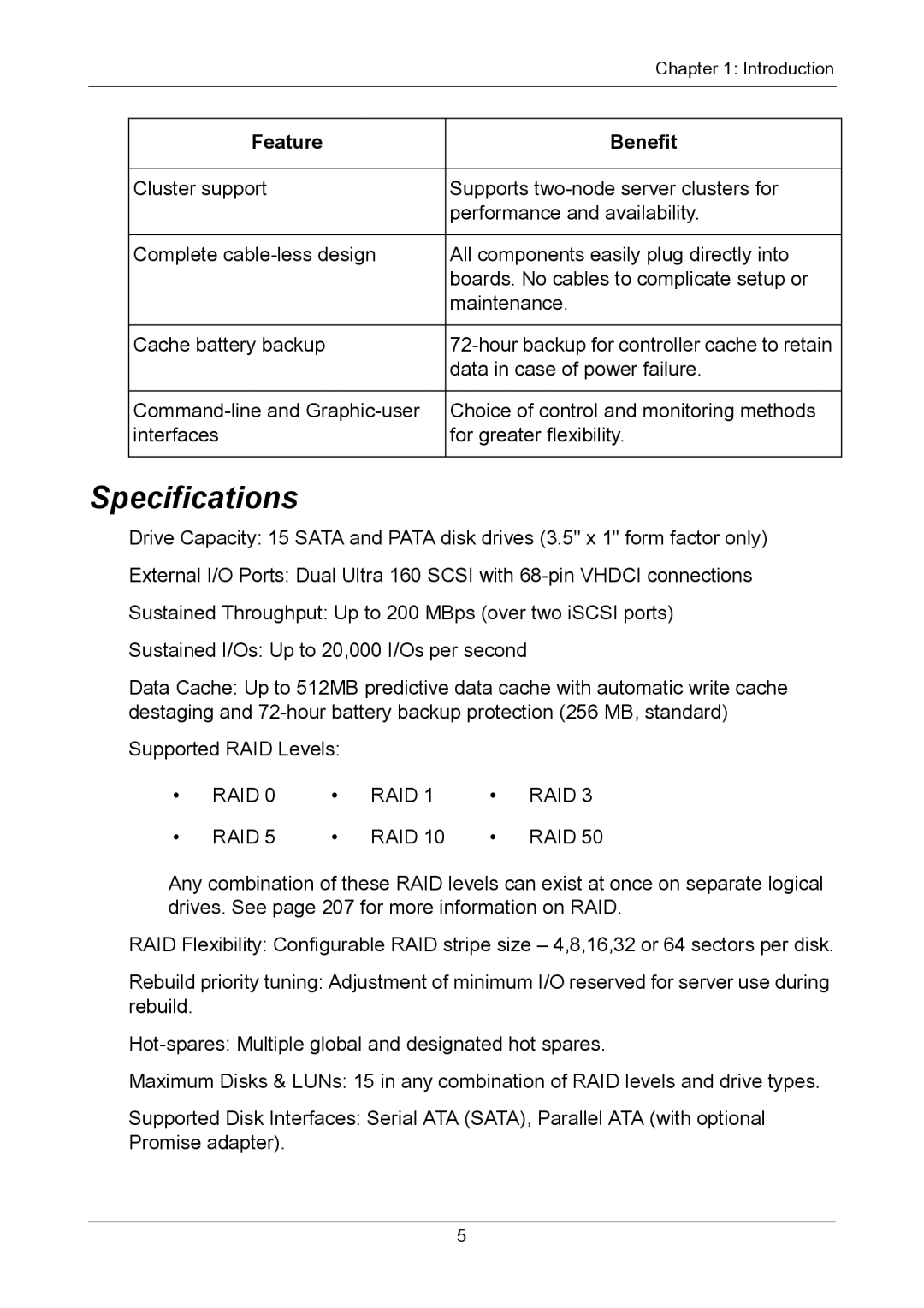|
| Chapter 1: Introduction |
|
|
|
|
|
|
|
|
|
| Feature | Benefit |
|
|
|
|
|
| Cluster support | Supports |
|
|
| performance and availability. |
|
|
|
|
|
| Complete | All components easily plug directly into |
|
|
| boards. No cables to complicate setup or |
|
|
| maintenance. |
|
|
|
|
|
| Cache battery backup |
| |
|
| data in case of power failure. |
|
|
|
|
|
| Choice of control and monitoring methods |
| |
| interfaces | for greater flexibility. |
|
|
|
|
|
Specifications
Drive Capacity: 15 SATA and PATA disk drives (3.5" x 1" form factor only)
External I/O Ports: Dual Ultra 160 SCSI with
Sustained Throughput: Up to 200 MBps (over two iSCSI ports)
Sustained I/Os: Up to 20,000 I/Os per second
Data Cache: Up to 512MB predictive data cache with automatic write cache destaging and
Supported RAID Levels:
• | RAID 0 | • | RAID 1 | • | RAID 3 |
• | RAID 5 | • | RAID 10 | • | RAID 50 |
Any combination of these RAID levels can exist at once on separate logical drives. See page 207 for more information on RAID.
RAID Flexibility: Configurable RAID stripe size – 4,8,16,32 or 64 sectors per disk.
Rebuild priority tuning: Adjustment of minimum I/O reserved for server use during rebuild.
Maximum Disks & LUNs: 15 in any combination of RAID levels and drive types.
Supported Disk Interfaces: Serial ATA (SATA), Parallel ATA (with optional Promise adapter).
5
